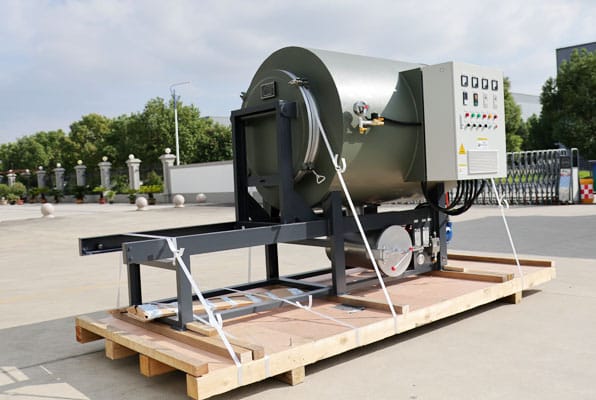When it comes to industrial cleaning, two types of equipment often come up: the calcination furnace and the oven voor vacuümreiniging https://8ruiyan.com/en/all-vacuum-cleaning-furnaces/. While both are called “furnaces,” they operate on different principles and are designed for distinct tasks. Understanding their differences is key to choosing the right one for your needs.

🔥 What is a Calcination Furnace?
A calcination furnace uses high temperatures in the presence of limited air to process materials. The goal is thermal decomposition, which removes volatile substances or organic components through oxidation and burning.
A good example is in preparing natural fruit and vegetable cleaning powder, where eggshells undergo calcination at 350-450°C for 2-4 hours . This process transforms the material itself. In medical research, calcination furnaces are used to create bone scaffolds by heating animal bones to around 350°C for 12 hours to remove organic material
💨 What is a Vacuum Cleaning Furnace?
A vacuum cleaning furnace operates under a reduced-pressure atmosphere. It cleans parts and components by combining controlled temperature, vacuum, and often gas flow to remove contaminants without oxidation. It’s designed for precision cleaning.
For instance, this method is highly effective for cleaning complex instruments like dental handpieces. One study showed that a pulse vacuum cleaning disinfector achieved a 100% cleaning effectiveness rate, significantly higher than traditional washing methods . In another application, vacuum brazing furnaces employ high-temperature “burn-out” cycles to remove contaminants from the furnace interior itself .
Key Differences at a Glance
| Feature | Calcination Furnace | Oven stofzuigen |
|---|---|---|
| Operating Environment | Limited air/oxygen | Vacuum or controlled atmosphere |
| Primary Mechanism | Thermal decomposition | Vacuum, temperature, and gas flow |
| Typical Applications | Material transformation, organic removal from solids | Cleaning complex parts, degreasing, binder removal |
| Cleaning Effect | Destroys organics by turning them to ash | Physically removes contaminants from surfaces |
Cleaning Effectiveness: Which is Better?
The answer depends entirely on what you need to clean.
Choose a Calcination Furnace for:
- Transforming materials by burning off organic components, like preparing specialized powders or bone scaffolds .
- Situations where the material being processed is meant to be chemically altered.
Choose a Vacuum Cleaning Furnace for:
- Cleaning finished components without damaging them, such as intricate medical instruments or machinery parts.
- Applications where preventing oxidation and secondary contamination is critical. The vacuum environment ensures a clean, controlled process.
- Achieving high, verifiable cleanliness standards, as demonstrated by its 100% success rate in cleaning dental handpieces .
The Bottom Line
Calcination and vacuum cleaning furnaces are not the same. They serve different purposes.
- Use a calcination furnace when your goal is to transform a material’s composition by removing organic matter through high-temperature burning.
- Use a oven voor vacuümreiniging when your goal is to remove contaminants from the surface of a part or component without altering the part itself, ensuring a high level of precision and cleanliness.
For cleaning mechanical parts or sensitive instruments where residue-free results are vital, the vacuum cleaning furnace is generally the more effective and efficient choice. For processing raw materials where the organic content needs to be eliminated, the calcination furnace is the appropriate tool.
For more help, contact us for a custom solution!
Whatsapp:86-19106101570
wechat:86-19106101570
email:fob@jsryan.com
